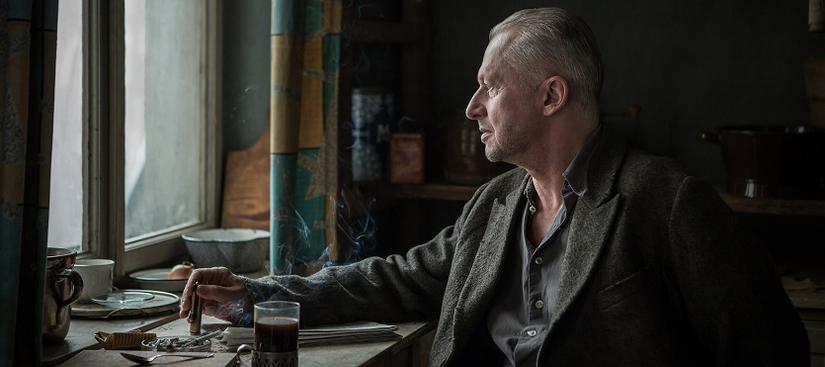
- Golden Globe Awards
Afterimage (Poland)
As Afterimage's credits start to roll, the inevitable becomes a reality: this is the last time we will see Andrzej Wajda's name on a new film. His final cinematic outing could not be a more beautiful and courageous artistic statement, though, which makes it a little more bearable.Degradation. This is an obvious theme of Afterimage, a film depicting the soul-crushing journey of the internationally recognized Polish avant-garde painter and theoretician Władysław Strzemiński. The artist was destroyed, piece by piece, by the Communist government for his refusal to go with the country's post-war flood of “changes for the better.” Degradation and humiliation. As uttered by one of the new ideology's agents who tells Strzemiński that by cooperating he might regain his existence. This is only one of the film's reminders of the methods of persuasion that were used back then, which was, if you are too young to remember, not that long ago.But Afterimage is not a straightforward biopic, as it narrates only Strzemiński's final years. It is a universal tale of the necessity and the value of both personal and national freedom – of speech, of movement, of association. Of creating art as a way of expressing oneself freely and communicating creatively with the world. Of an artist's ability to transcend the human-made barriers and inspire, open, unite. This theme, one that Wajda imprinted on many of his films, is delivered in all of its complexity by the story of a man who devoted his career to engaging others in his worlds.For sixty years, Wajda was at the forefront of subsequent waves of Polish cinema, from the times of the “Polish Film School” (Ash and Diamond, Promised Land, Man of Marble), to the post-Communist transformation period (Katyń). Each time establishing a suitable visual language to go beyond the literal meaning. Each time finding a way to underline that art is not what one sees, but how one sees it, as layed out in Strzemiński's “theory of vision.” The two men were both role models whose greatest impact on young people was to teach them how to think for themselves.At the same time, Wajda was prophetic about what is happening in Poland right now, with agents of the new kind of “changes for the better” offering easily digestible “true versions” of every story, and prmoting hate towards any ambiguity or complexity. The director was always vocal about his stance on mixing politics into everything, therefore the best way he could defy those who want to use art in their own ideological playground was to make a seemingly political Afterimage that is something else entirely – a true work of art.Thus, in spite of the degradation, the humiliation, and the soul crushing, Afterimage is ultimately not a film of defeatism, but of hope. The hope coming from Wajda's understanding that each ideology will eventually crumble and fade. And that art of the distant past will be appreciated and celebrated for what it was, not what some external forces decided it has to be.

